🌱 Agriculture and Food Systems: Essential Concepts for Reading Comprehension
Agriculture and food systems form the backbone of human civilization, shaping economies, societies, and cultures. From ancient farming practices to modern agri-tech innovations, this topic spans a vast array of disciplines. RC passages on agriculture often address issues like food security, sustainable practices, and global trade, requiring readers to engage with complex arguments and nuanced perspectives. Understanding key concepts in agriculture and food systems equips you to decode these passages with clarity and confidence.
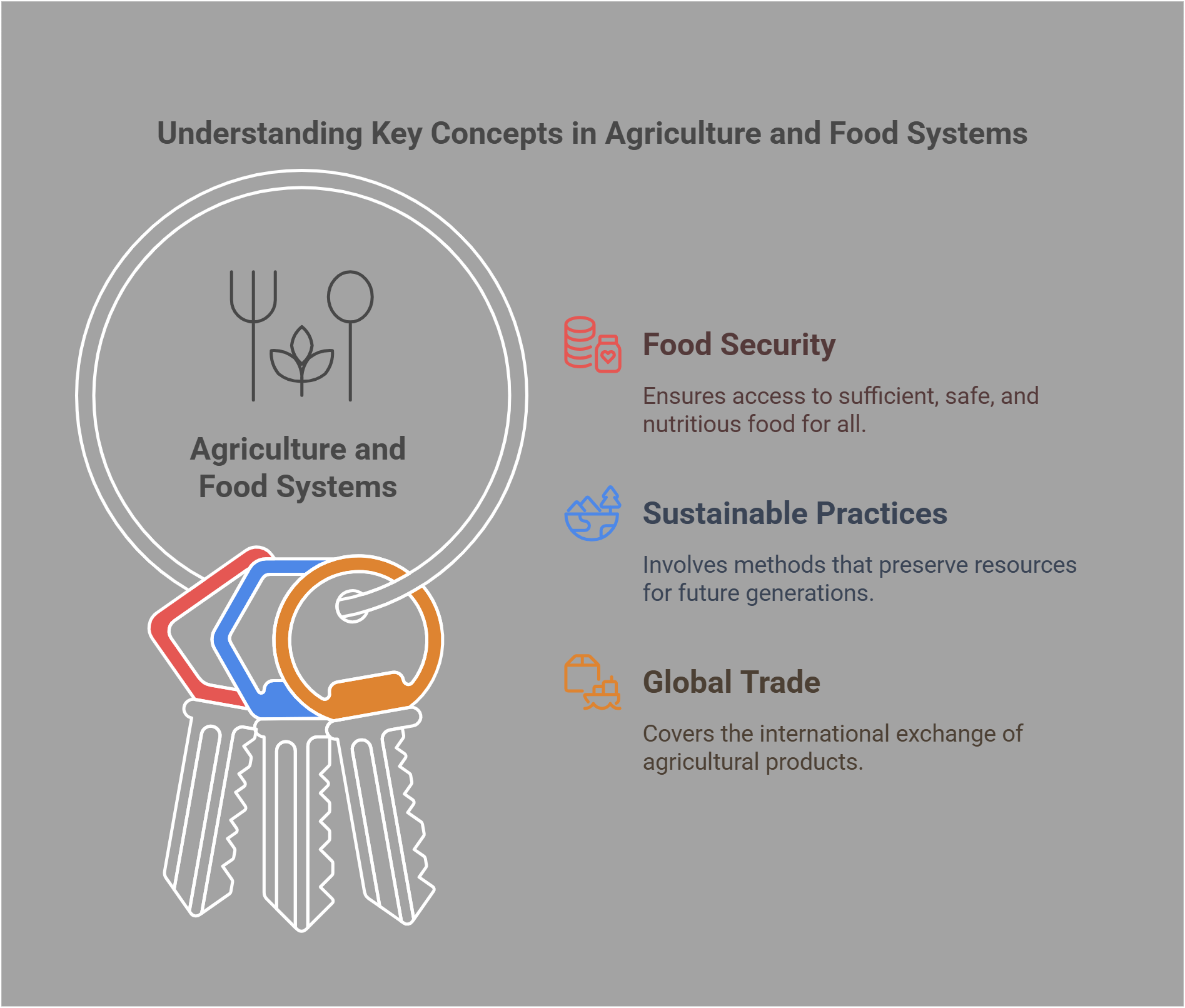
📋 Overview
This guide will cover the following essential agriculture and food systems concepts:
- History of Agriculture
- Agricultural Practices
- Sustainable Farming
- Genetically Modified Organisms (GMOs)
- Food Security
- Global Food Trade
- Climate Change and Agriculture
- Urban Farming
- Precision Agriculture
- Ethical Issues in Food Systems
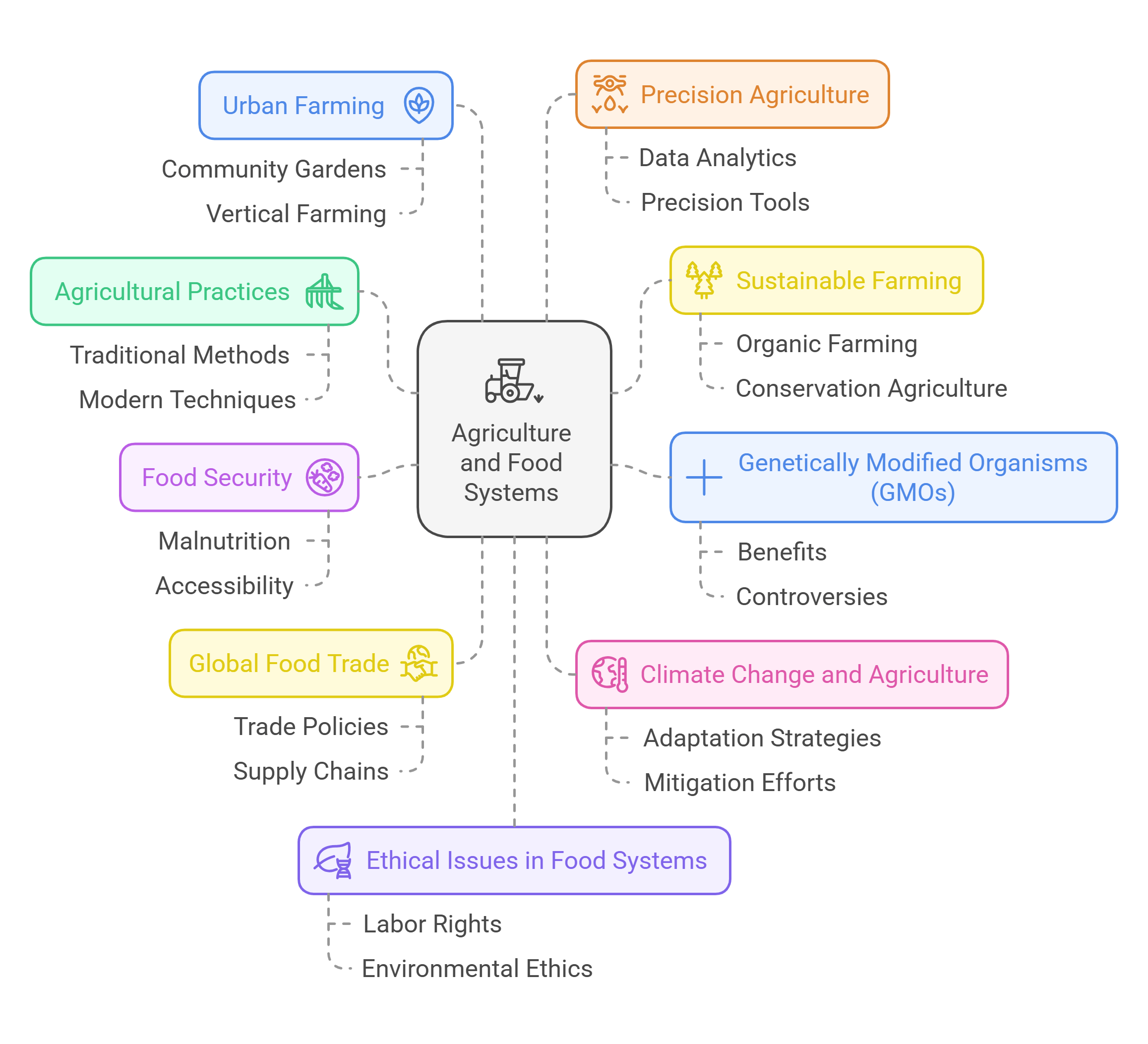
🔍 Detailed Explanations
1. History of Agriculture
Agriculture’s evolution from foraging to farming marked a turning point in human history. The Neolithic Revolution (circa 10,000 BCE) saw the domestication of plants and animals, leading to settled communities.
- Ancient Developments: Early civilizations like Mesopotamia and Egypt thrived due to innovations like irrigation, enabling stable food supplies and population growth.
- Medieval Innovations: Techniques such as the three-field system of crop rotation improved yields and resource use.
- Industrial Revolution: Mechanization, such as the invention of the tractor, accelerated agricultural production.
- Modern Era: The Green Revolution (mid-20th century) introduced high-yield crops, chemical fertilizers, and pesticides, significantly increasing food production. However, these advancements also raised concerns about environmental degradation and long-term sustainability.
📘 Example: The introduction of rice-wheat systems in Asia helped combat hunger but created challenges such as overuse of water and declining soil health.
📌 Takeaway: Agriculture’s history mirrors humanity’s development, transforming societies from hunter-gatherers into globalized economies reliant on technology.
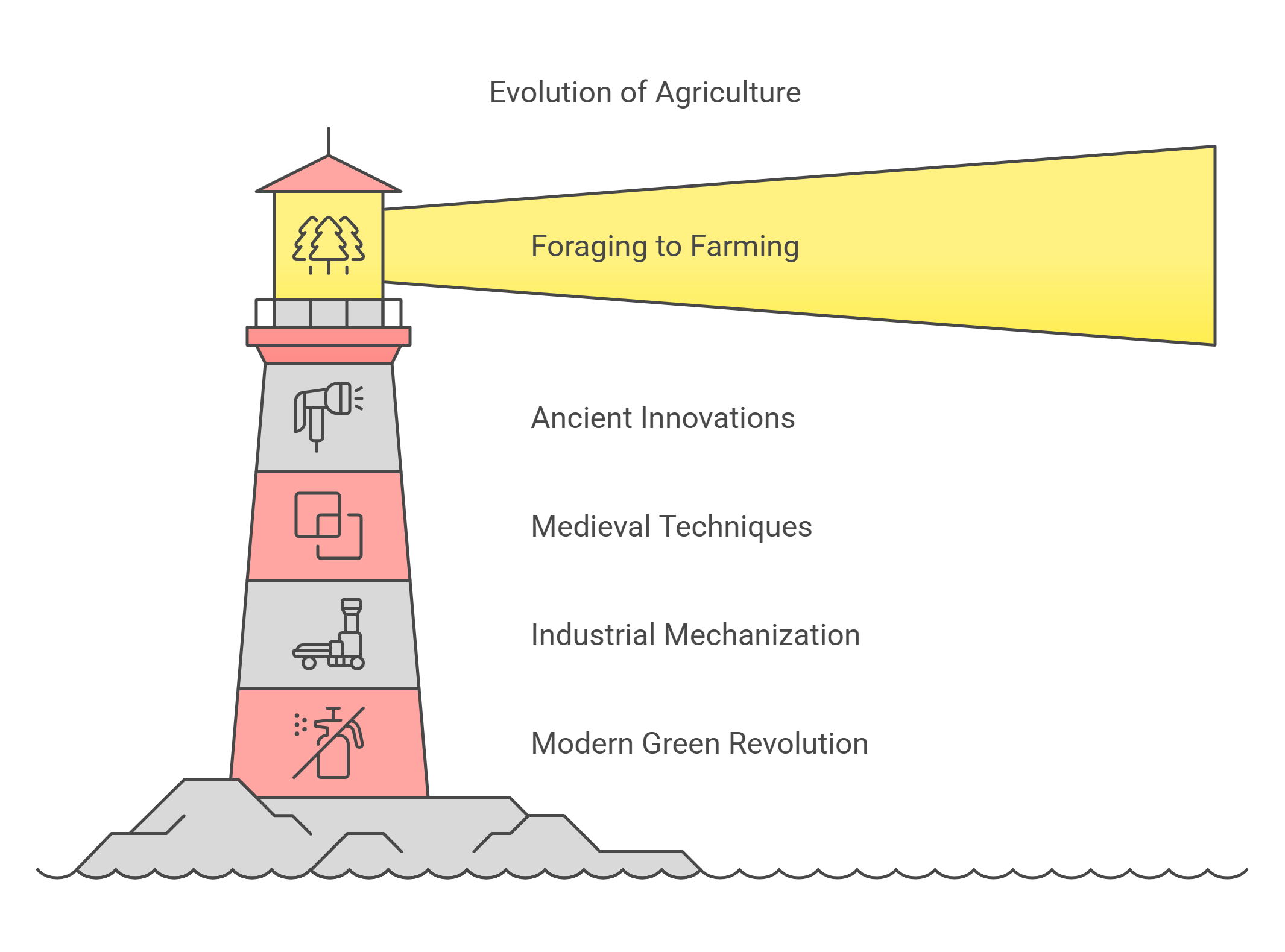
2. Agricultural Practices
Agricultural practices encompass traditional and modern methods of growing crops and raising livestock, influenced by geography, culture, and technological advancement.
- Subsistence Farming: Focused on self-sufficiency, often practiced in rural and resource-constrained regions.
- Commercial Farming: Geared toward mass production, utilizing advanced machinery and technology.
- Organic Farming: Avoids synthetic fertilizers and pesticides, emphasizing eco-friendly methods.
- Specialized Techniques:
- Monocropping: Planting a single crop over large areas, efficient but risky for pest outbreaks.
- Intercropping: Combining different crops to enhance soil fertility and optimize resources.
📘 Example: The practice of intercropping legumes with cereals improves nitrogen content in the soil, reducing dependency on chemical fertilizers.
📌 Takeaway: Agricultural methods vary widely, balancing productivity and environmental impact based on specific needs.
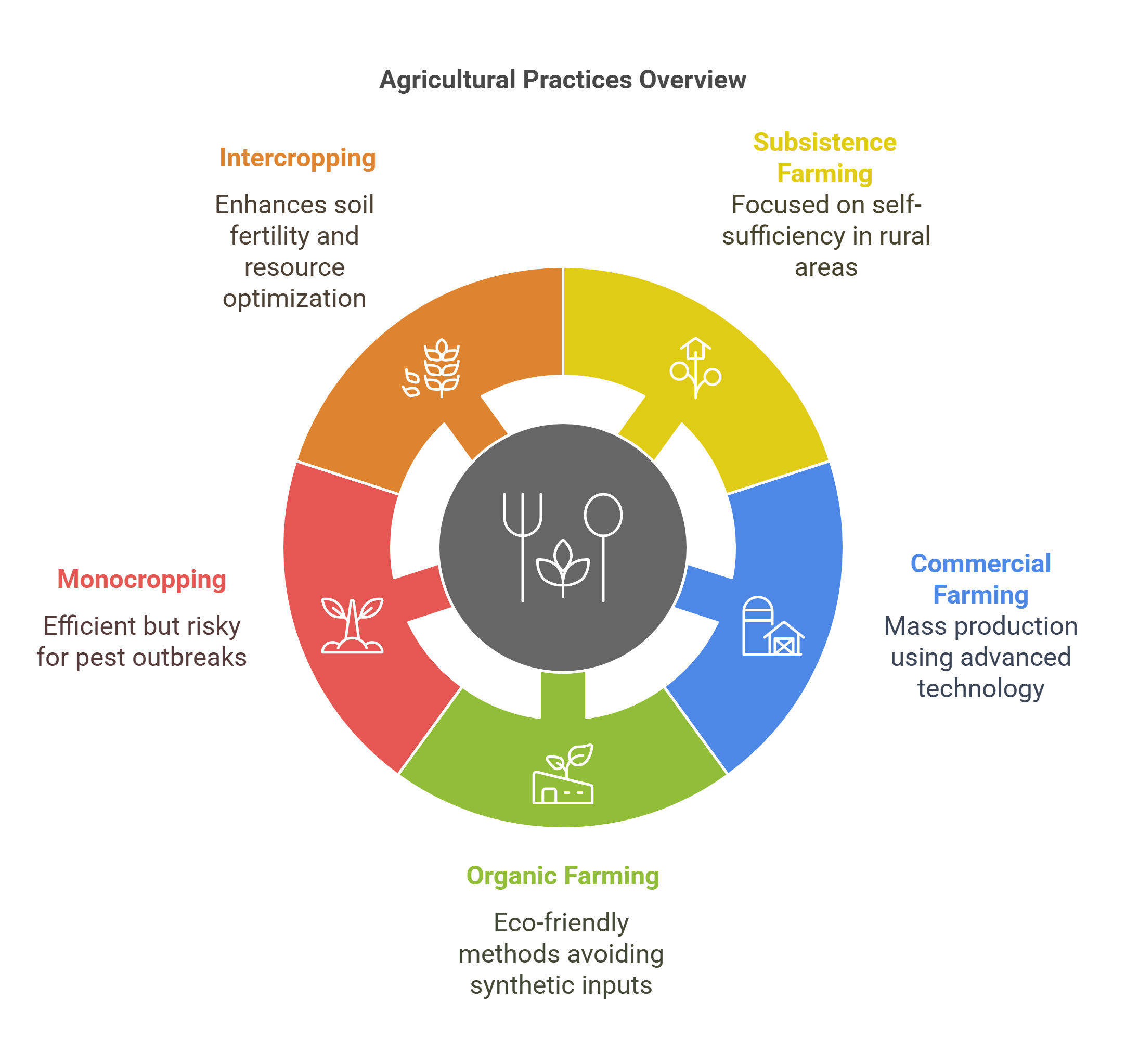
3. Sustainable Farming
Sustainable farming seeks to balance productivity with environmental stewardship to ensure long-term agricultural viability.
- Key Techniques:
- Crop Rotation: Alternating crops to improve soil health.
- Agroforestry: Integrating trees into farmland to reduce deforestation and improve biodiversity.
- Water-Efficient Practices: Drip irrigation reduces water waste.
📘 Example: In Ethiopia, terracing on hillsides has improved water retention, enabling farmers to combat soil erosion while maintaining yields.
📌 Takeaway: Sustainable farming is about growing food in harmony with nature, ensuring resources for future generations.
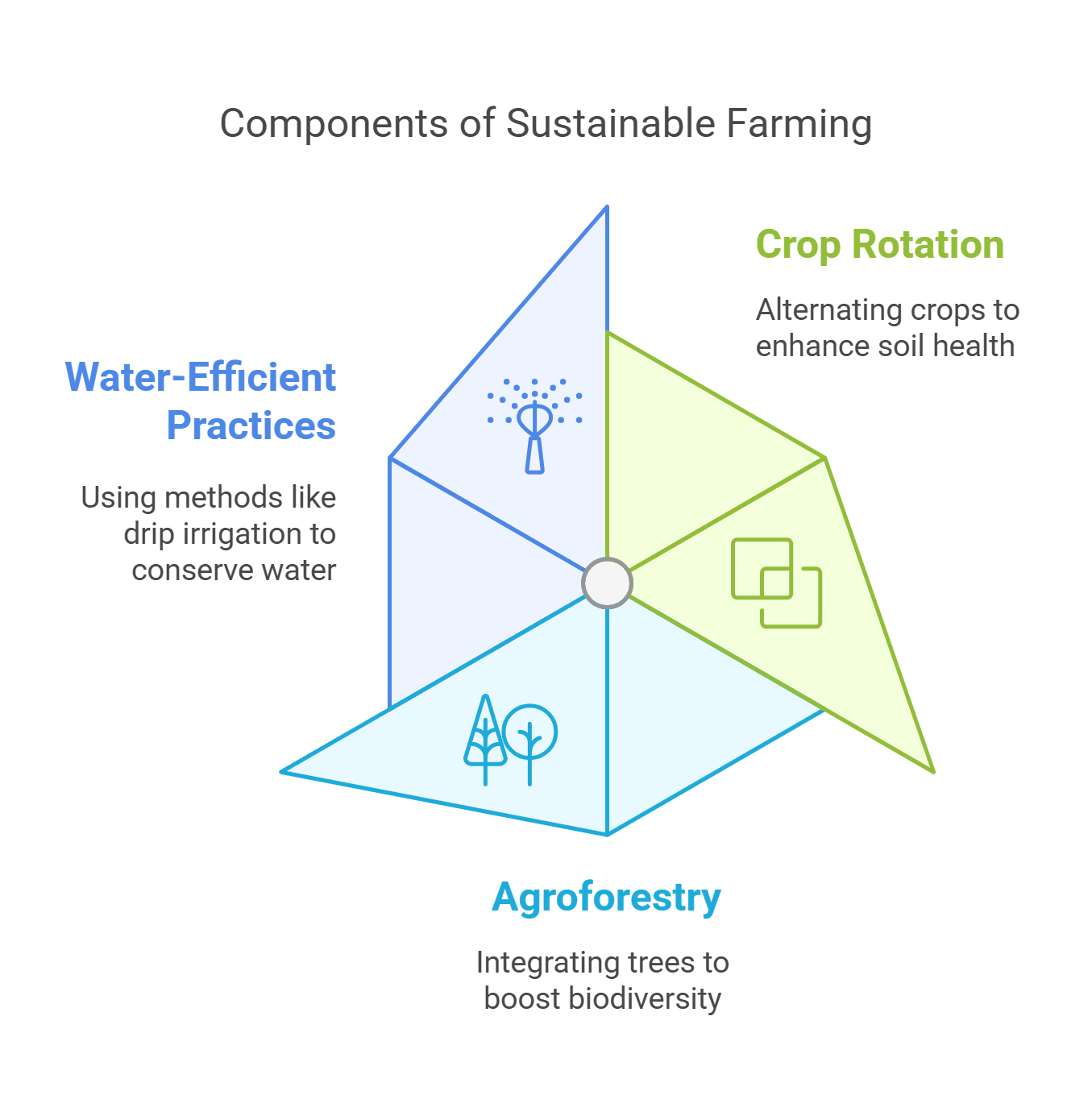
4. Genetically Modified Organisms (GMOs)
GMOs are organisms whose genetic material has been altered to confer beneficial traits.
- Key Traits:
- Pest Resistance: Crops like Bt cotton reduce the need for chemical pesticides.
- Nutritional Enhancement: Golden rice, fortified with vitamin A, addresses malnutrition.
- Drought Resistance: Crops engineered to withstand arid conditions enhance resilience.
📘 Example: Drought-resistant maize in sub-Saharan Africa has improved yields despite water scarcity.
📌 Takeaway: GMOs represent scientific innovation aimed at solving agricultural challenges, though they raise ethical and ecological concerns.
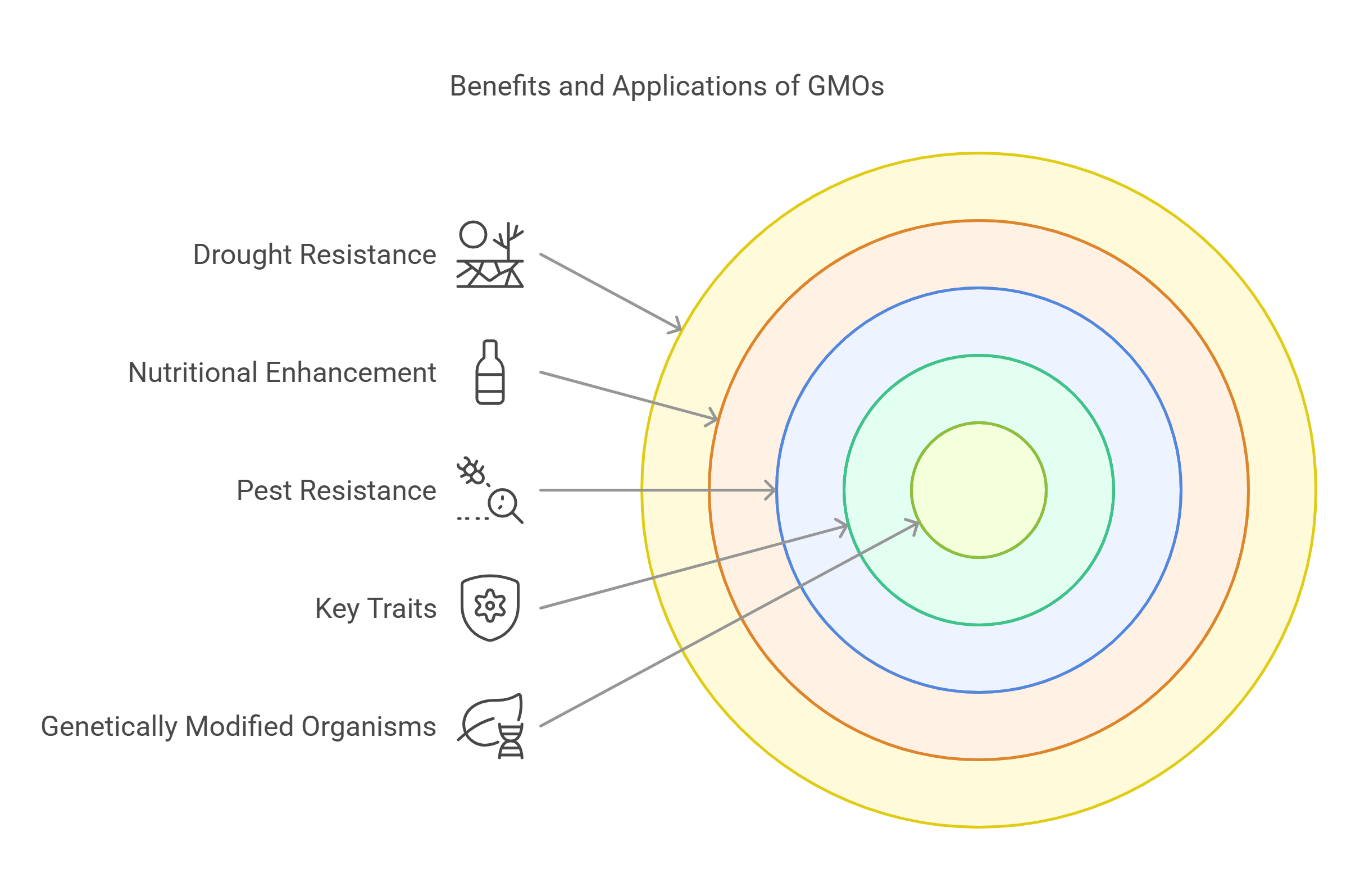
5. Food Security
Food security ensures that all people have access to sufficient, safe, and nutritious food.
- Global Challenges:
- Poverty and inequality limit access to resources.
- Conflict disrupts food supply chains.
- Climate change affects crop reliability.
📘 Example: The World Food Programme provides critical food aid in war zones, while local initiatives like urban farming reduce dependence on global supply chains.
📌 Takeaway: Achieving food security involves addressing systemic issues while empowering local solutions.
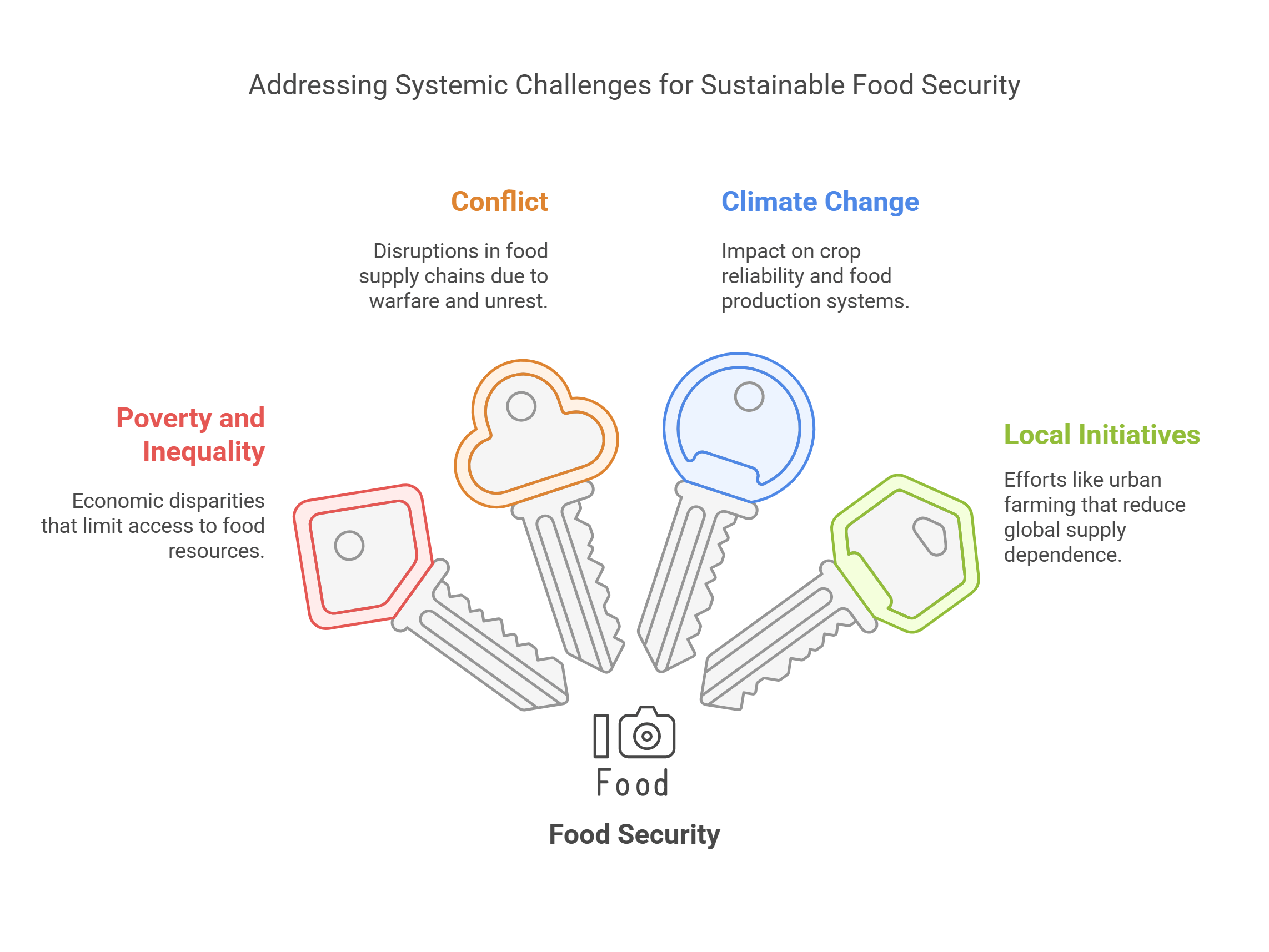
6. Global Food Trade
The global food trade connects producers and consumers across continents, shaping economies and dietary preferences.
- Benefits: Diversifies diets and stimulates economic growth.
- Challenges: Inequities in trade agreements can disadvantage small producers.
📘 Example: Quinoa’s global popularity boosted Peruvian exports but made it expensive for local populations.
📌 Takeaway: Global food trade enhances accessibility but requires equity to ensure mutual benefit.
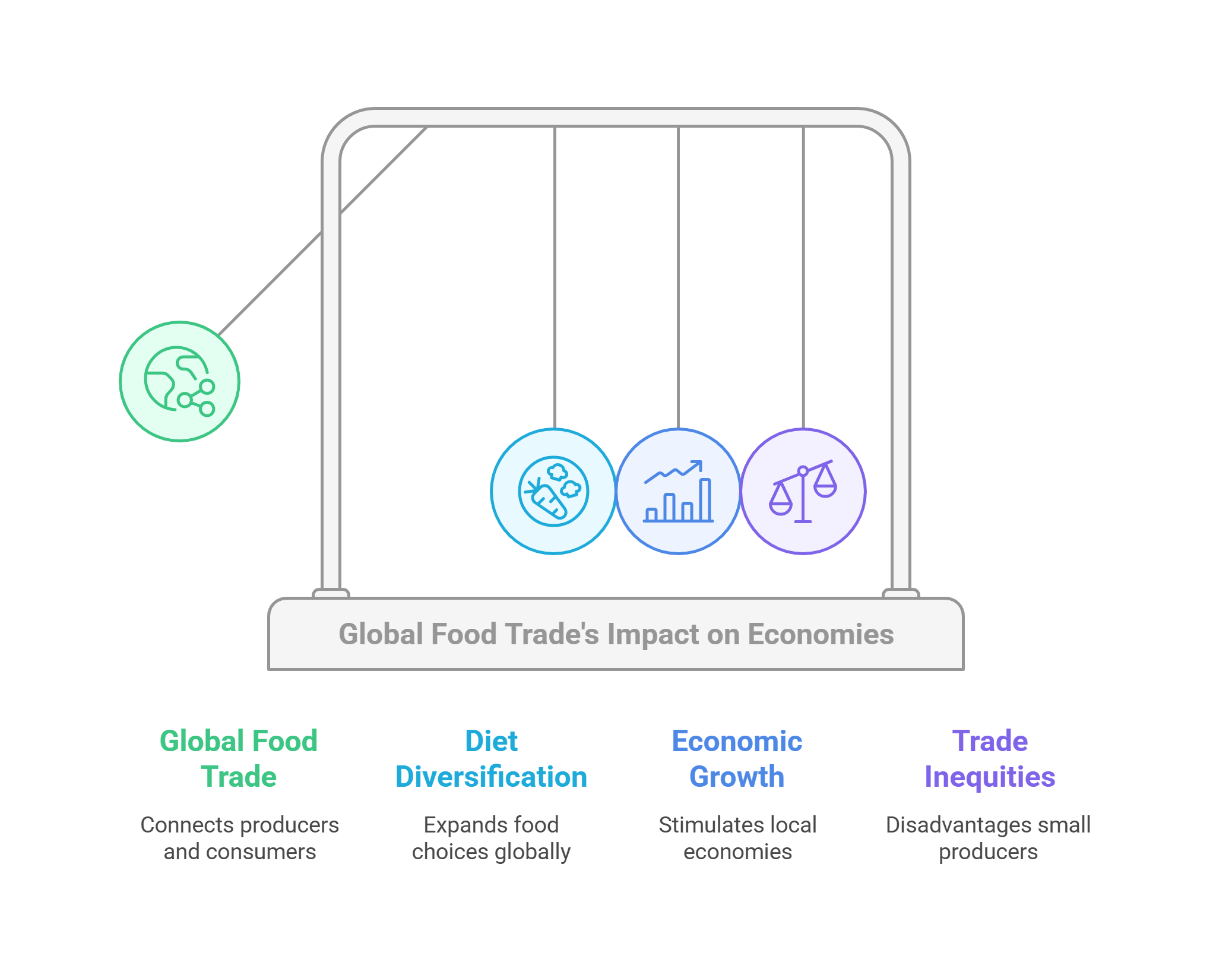
7. Climate Change and Agriculture
Climate change impacts agriculture by altering weather patterns and water availability.
- Key Effects:
- Increased droughts and floods disrupt planting cycles.
- Higher temperatures reduce yields of staple crops.
- Adaptations: Farmers are adopting drought-resistant crops and diversifying planting schedules.
📘 Example: Floating gardens in Bangladesh provide food security in flood-prone areas.
📌 Takeaway: Resilient farming systems can mitigate the risks posed by climate change.

8. Urban Farming
Urban farming incorporates agriculture into urban settings, utilizing rooftops and vertical farms.
- Key Benefits:
- Reduces food miles, lowering transportation costs.
- Enhances community engagement.
- Techniques: Hydroponics and aquaponics maximize yields in limited spaces.
📘 Example: Singapore’s vertical farms meet the food needs of a densely populated city.
📌 Takeaway: Urban farming bridges the gap between cities and agriculture, promoting sustainability.
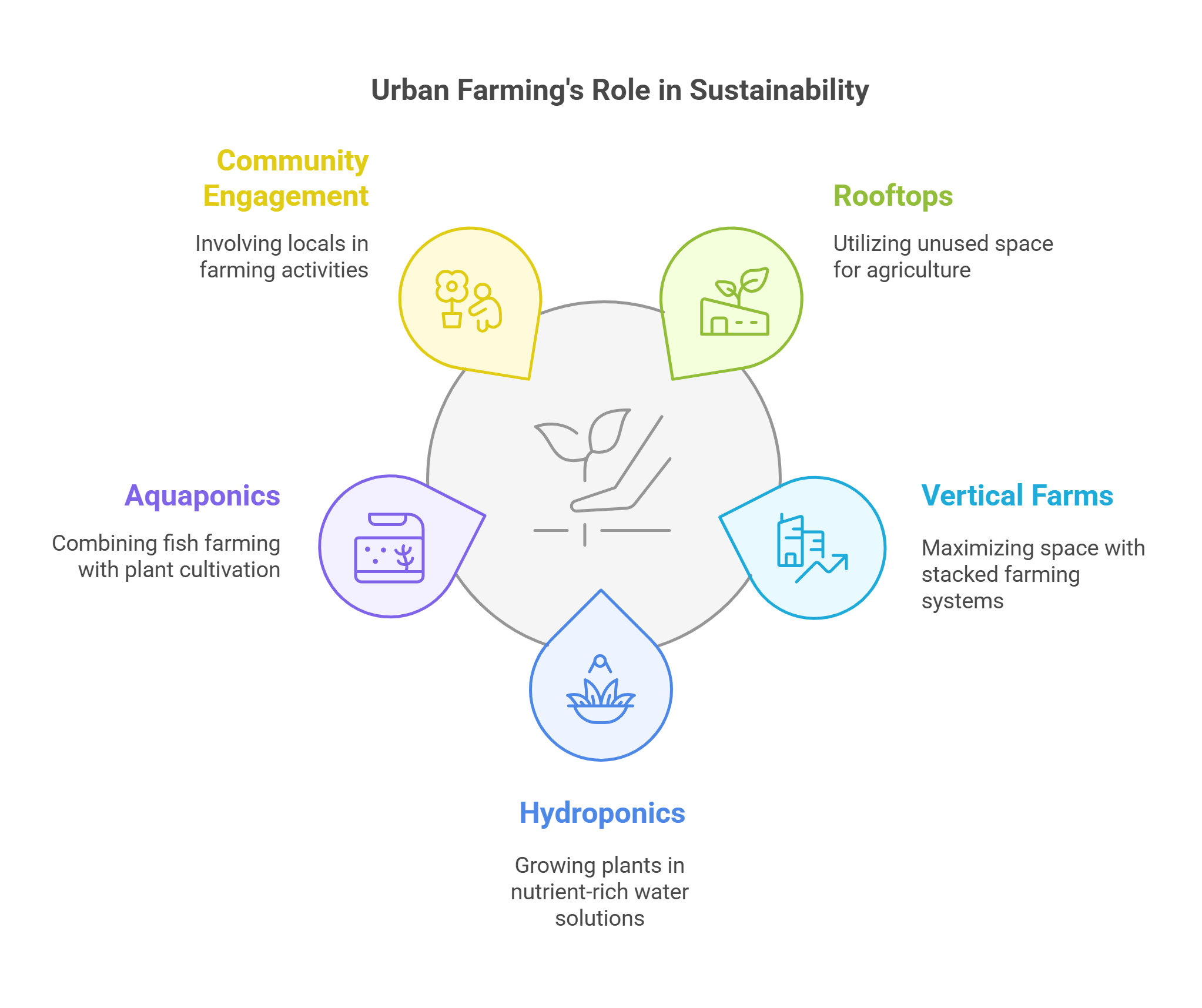
9. Precision Agriculture
Precision agriculture uses technology to optimize resources and increase efficiency.
- Key Tools:
- GPS-guided machinery for accurate planting.
- Drones for monitoring crop health.
- Soil sensors for nutrient management.
📘 Example: Corn farmers in the U.S. have cut water use by 20% using precision tools.
📌 Takeaway: Technology enables farmers to maximize productivity while minimizing environmental impact.
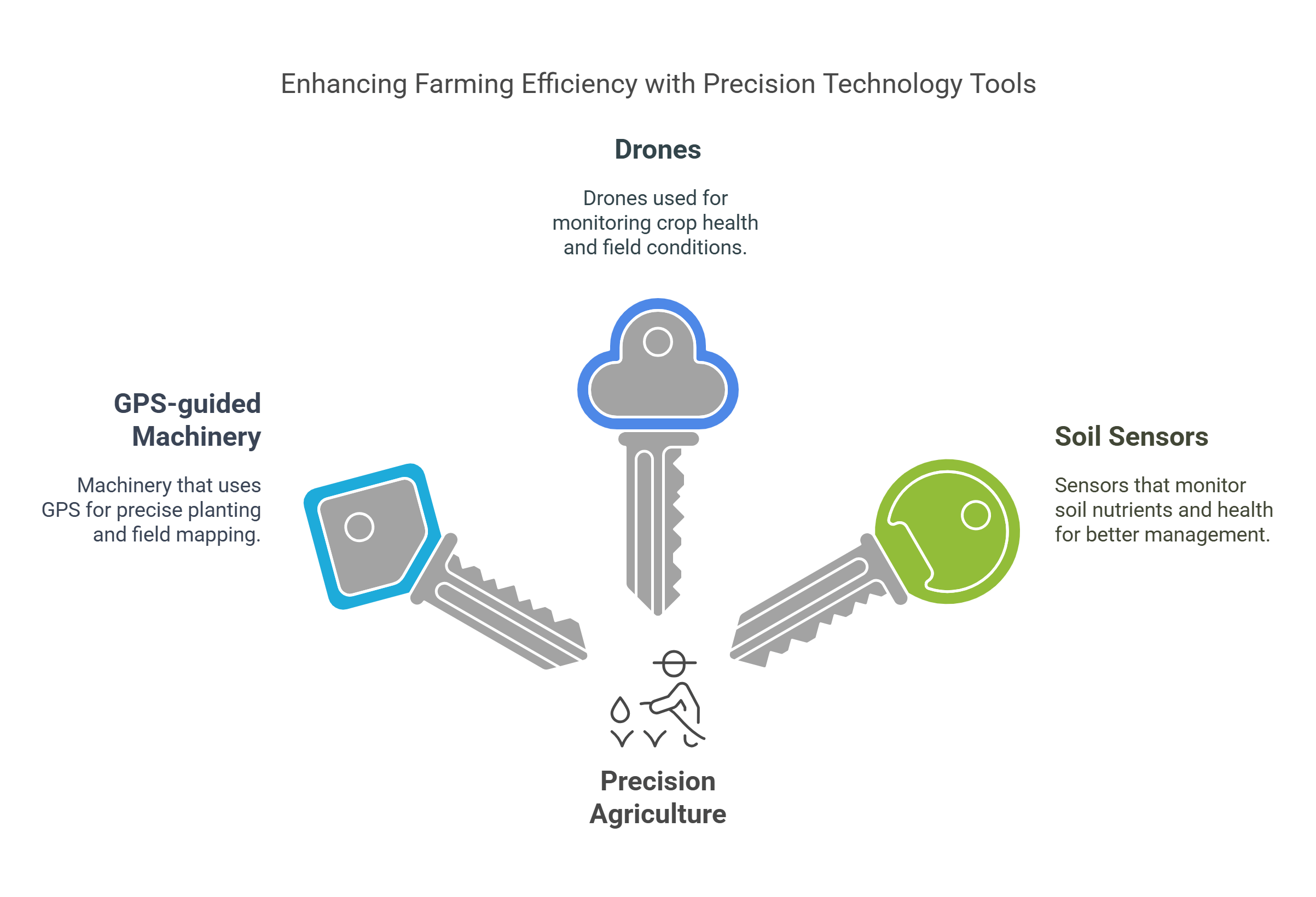
10. Ethical Issues in Food Systems
Ethical concerns in food systems address fairness, sustainability, and welfare.
- Fair Trade: Ensures equitable prices for small-scale farmers.
- Animal Welfare: Promotes humane practices in livestock farming.
- Food Waste: Campaigns like “Too Good To Go” redistribute surplus food.
📘 Example: Fair-trade coffee initiatives empower small farmers in Latin America, providing stable incomes and community investment.
📌 Takeaway: Ethical food systems ensure justice for all participants, including animals and marginalized communities.
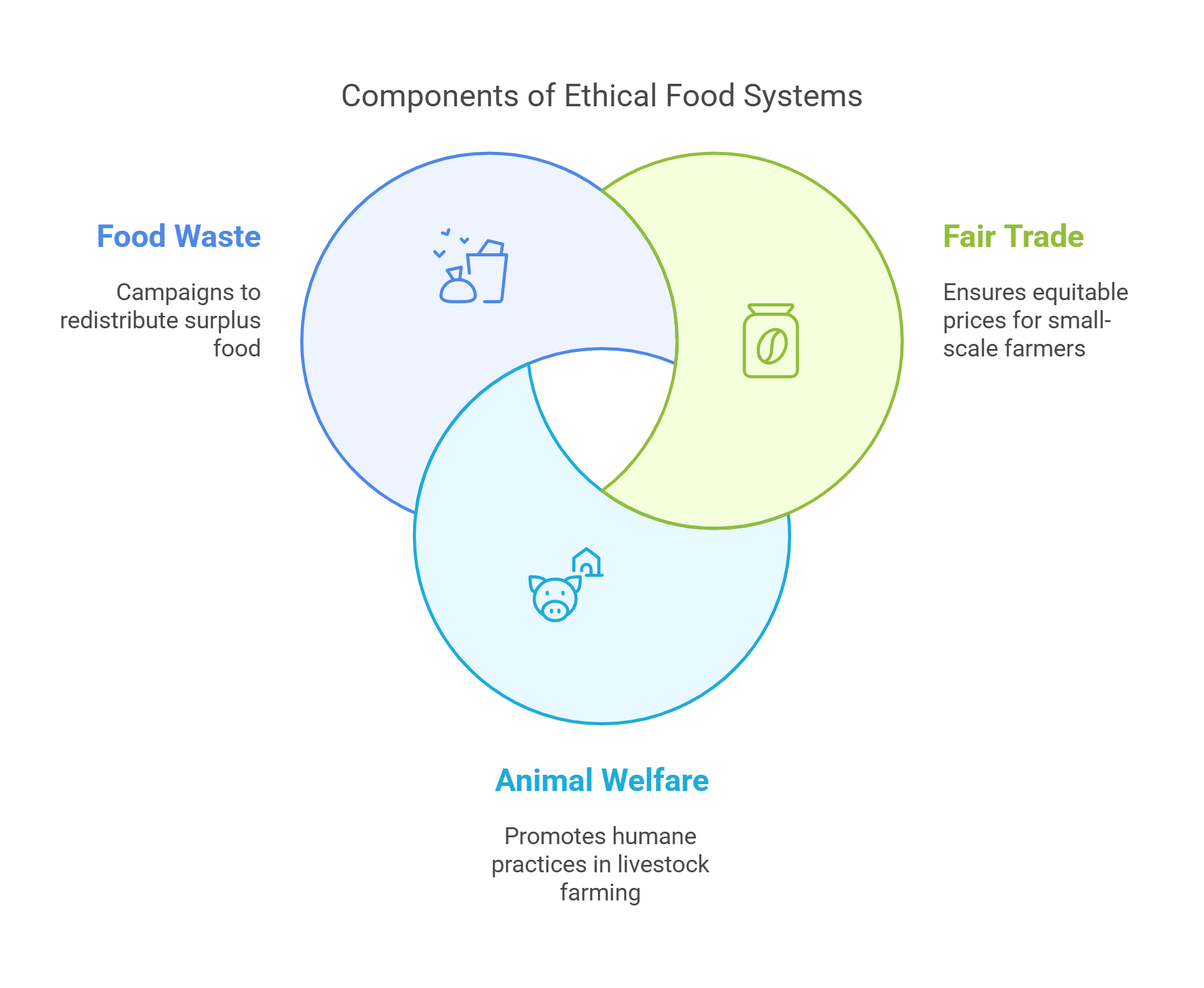
✨ Conclusion
Agriculture and food systems are central to addressing global challenges, from ensuring food security to combating climate change. By understanding these essential concepts, you’ll be well-equipped to tackle RC passages on this vital topic, interpreting arguments, analyzing trends, and appreciating the complexities of feeding a growing world. 🌍










